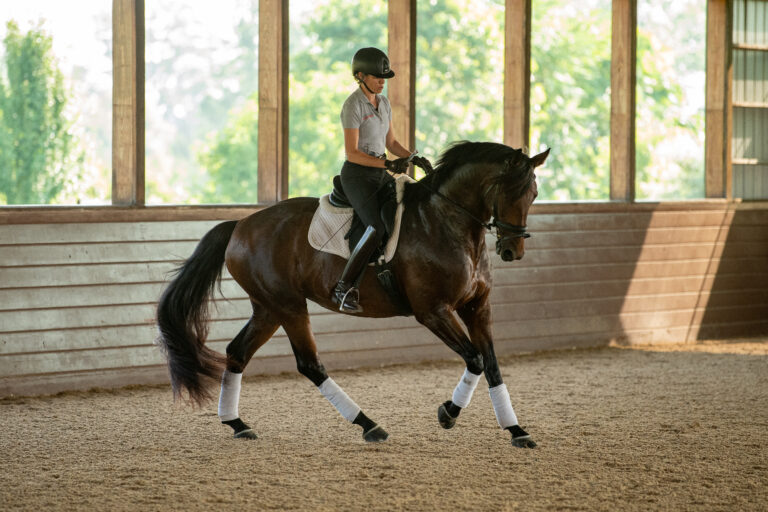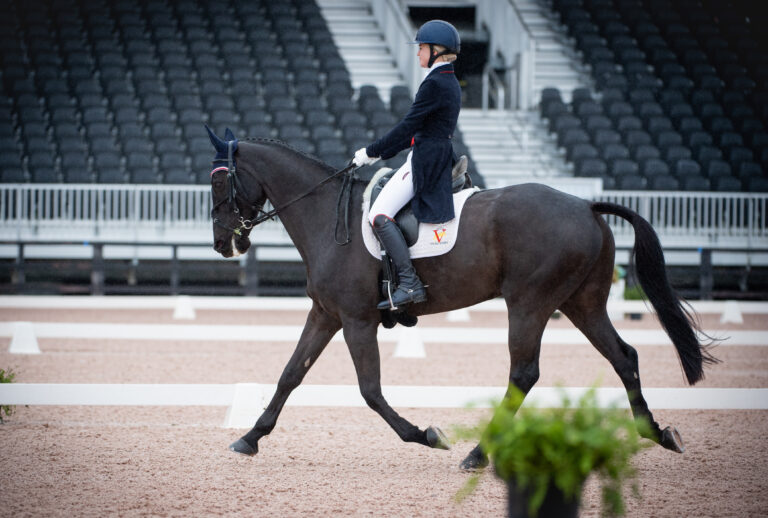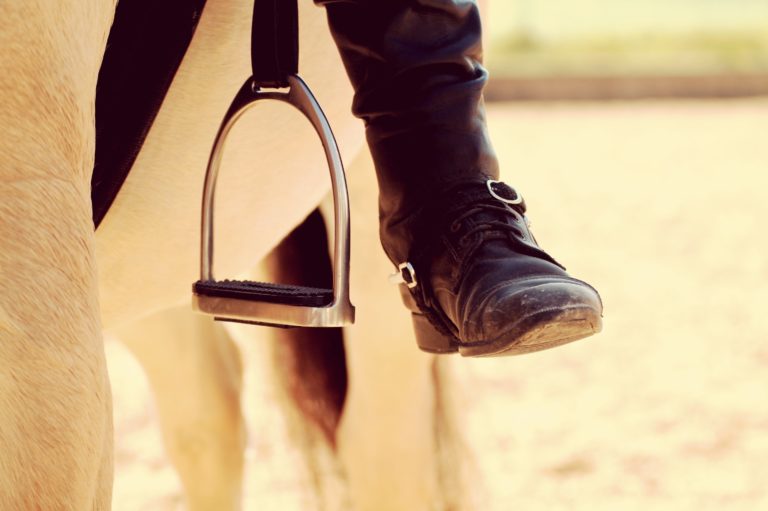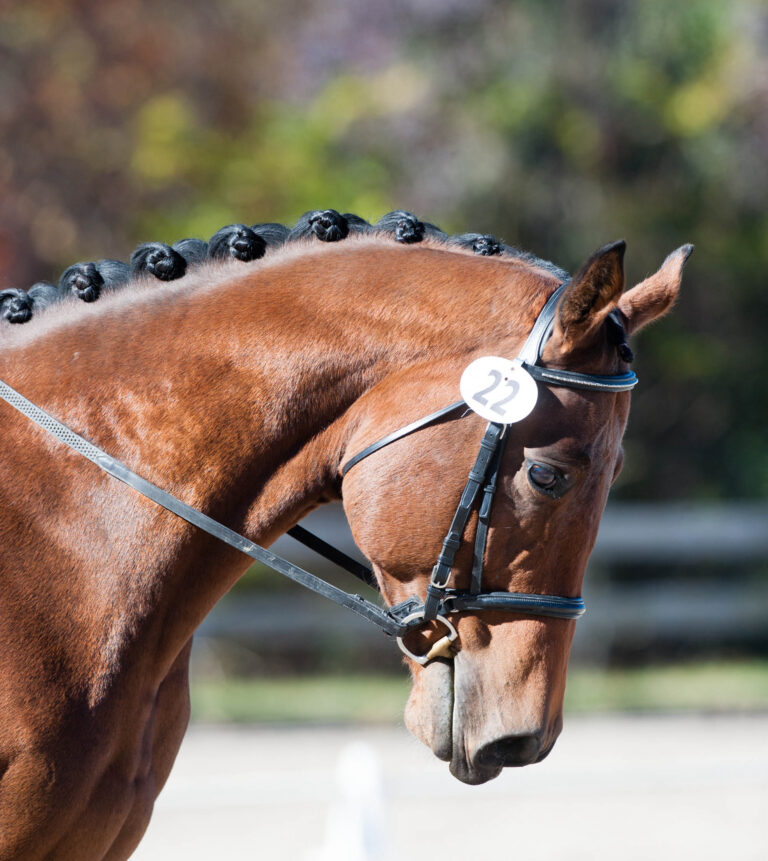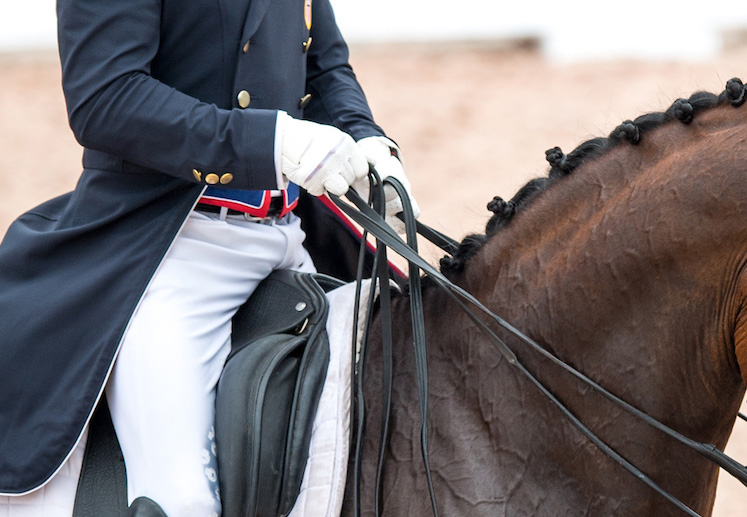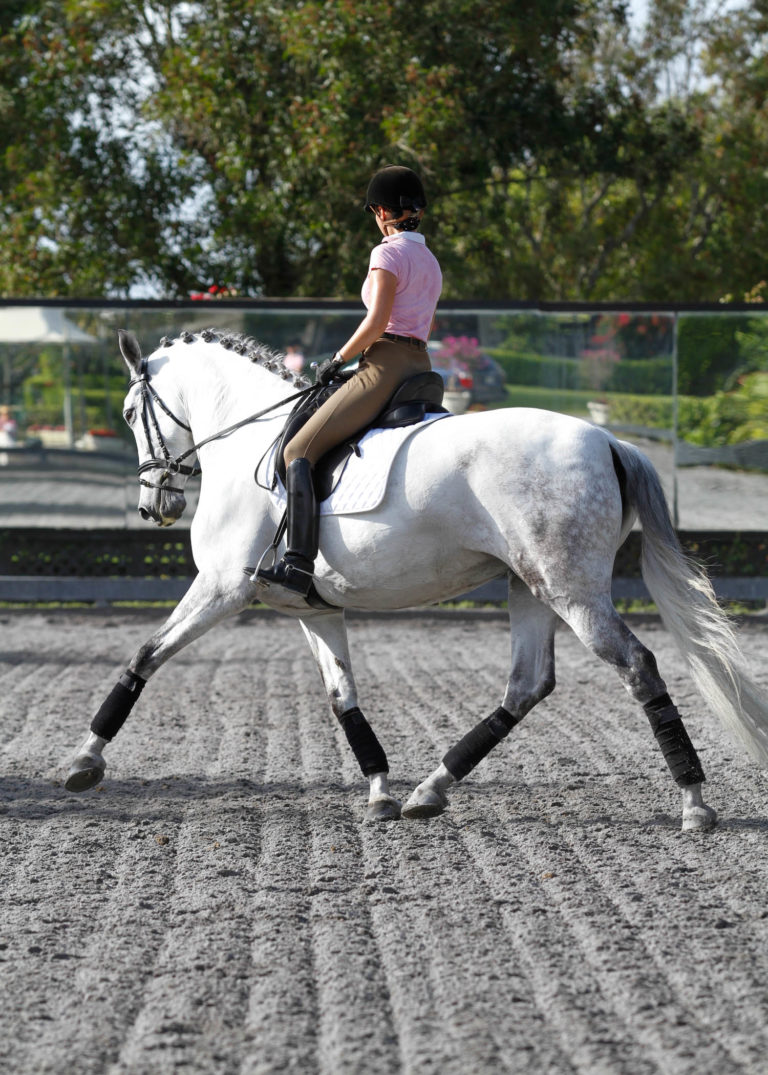Q: I’m confused about the terms tempo and rhythm. I understand I’m supposed to always keep the same tempo, but what about the rhythm? When I ride at a faster tempo, the rhythm surely must change. I don’t understand how else I could ride a transition between working and extended trot. —Jeannette Shaw of Chevy Chase, Washington, D.C.
A: First of all, let’s define the terms:
Tempo: The rate or speed of motion or activity
Rhythm: A strong, regular, repeated pattern of movement or sound
There tends to be a lot of confusion like yours about these two concepts, but they are actually completely different concepts. One is sequence (rhythm) and one is speed (tempo).

If you think about the gaits of a horse, the walk has a four-beat rhythm, the trot has a two-beat rhythm of diagonal pairs of legs and the canter has a three-beat rhythm of the outside hind leg first, then the diagonal pair together and then the lead inside foreleg.
Varying the tempo of the gaits does not change the rhythm unless your horse makes an actual error or does something unusual such as stumbling, skipping or dramatically losing his balance. Rhythm just describes the sequence of the footfalls per stride, but has nothing to do with speed. There are many cases where the two terms are mistakenly used interchangeably.
The main focus in your trot extensions is to not allow the speed of your horse’s steps (beats per minute, BPM) to change. He should learn how to extend his frame and length of step only, maintaining enough balance and strength to keep the number of beats per minute the same as in his collected trot. This is a big challenge, and you actually may not see many horses do it well.
It would give you a good idea of how to do this if you rode with the help of a metronome (I have an app for this on my iPhone). Set the metronome to equal your horse’s collected trot, and then see what happens when you extend the trot. You may quickly find that your horse quickens the tempo rather than keeps the same tempo and lengthens his stride. It’s much easier to simply get quicker.
The majority of horses will opt to simply get quicker when you ask them to start medium and extended trot at first. When I start my horses into levels of work where they are required to learn this, I use only short distances and will use the corners of the arena to help me. I ask for a few steps of more “go” in the trot, and then remind them quickly of the balance to come back into collection, preferably coming into a corner.
Again, most horses will initially try to run away and get too fast in the tempo. Once they realize that the answer is not to go for a long distance, but to go more for only a few strides, they get the idea that it’s not about speed but about power and balance.
If your horse actually loses rhythm, it would feel almost like a different gait or an error. If you hop along a sidewalk and then all of a sudden just jog, that’s a change of rhythm. Without seeing what’s happening with you and your horse in person, I’m assuming you’re struggling with the tempo (and not rhythm) as are most horses and riders.
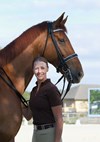
Heather Blitz won team gold and individual silver medals at the 2011 Pan American Games and was an alternate for the U.S. Equestrian Federation (USEF) 2012 Olympic dressage team. Based in Massachusetts and Florida, she teaches in Denmark, England and the U.S. (heatherblitz.info).


